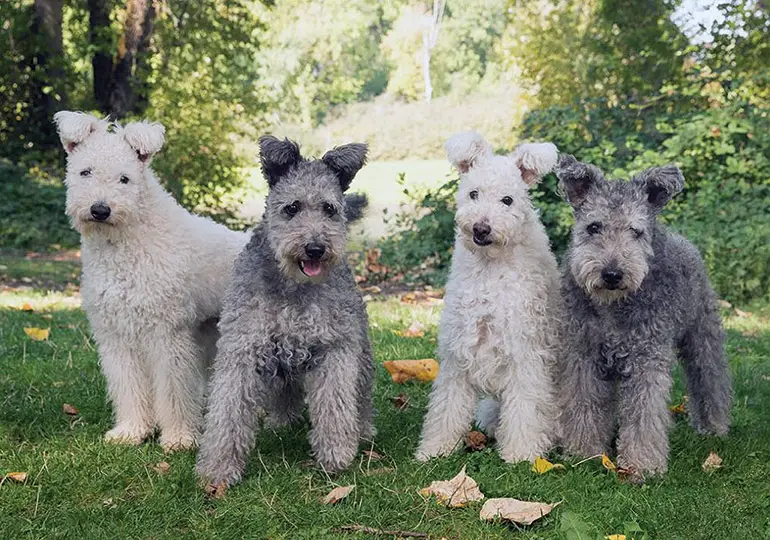The Pumi, a small to medium-sized dog breed hailing from Hungary, has captured the hearts of many dog enthusiasts with its distinctive curly coat, lively personality, and unparalleled intelligence. This unique breed, which has become increasingly popular in recent years, possesses a rich history and a variety of fascinating traits. In this blog post, we will explore the Pumi’s origins and its journey from Hungarian roots to modern-day marvel. So, let’s dive in and unravel the mysteries of the Pumi.
I. A Brief History of the Pumi
The Pumi’s history can be traced back to the 17th and 18th centuries when Hungarian shepherds developed this breed to be a multi-purpose working dog. The Pumi was specifically bred for herding livestock, such as sheep and cattle, and for protecting farms from predators. The breed’s ancestry is believed to be a mix of various local Hungarian breeds, along with the imported Puli and German Spitz. This combination resulted in the Pumi’s distinct appearance and versatile skill set.
By the early 20th century, the Pumi had become an essential part of Hungarian rural life. However, it wasn’t until the 1920s that the breed started to gain recognition as a separate breed from the Puli. In 1935, the first official breed standard for the Pumi was published, and the breed was officially recognized by the Fédération Cynologique Internationale (FCI) in 1954. Despite the Pumi’s long history, it was not until 2016 that the breed was finally recognized by the American Kennel Club (AKC).
II. Physical Characteristics of the Pumi
The Pumi is a small to medium-sized breed, with males typically standing between 15-18.5 inches and females between 14-17.5 inches at the shoulder. They generally weigh between 22-33 pounds. This compact, well-proportioned dog is known for its unique appearance, which includes a curly, dense coat that comes in various shades of gray, black, or fawn. The coat is considered “semi-corded” and can vary in length from short curls to long cords.
One of the most distinctive features of the Pumi is its ears. The breed has medium-sized, high-set ears that are covered in curly hair and slightly bent forward at the tip, giving them a playful and alert appearance. The Pumi’s eyes are dark and almond-shaped, and its tail is typically carried in a tight curl over its back.
III. The Pumi’s Energetic and Intelligent Personality
The Pumi is a spirited and intelligent breed, known for its lively and attentive demeanor. This breed thrives on mental and physical stimulation and is incredibly agile and athletic. Pumis are often described as “eager to work,” making them excellent candidates for various dog sports such as agility, herding trials, and obedience competitions.
This energetic breed is also known for its affectionate and devoted nature. Pumis are very loyal to their families and can be protective of their loved ones. They tend to be reserved with strangers but are typically friendly once they become familiar with someone. Pumis are also known to get along well with other dogs and animals, particularly if socialized from a young age.
IV. Training and Exercise Needs of the Pumi
Given the Pumi’s high energy levels and intelligence, it is essential to provide them with sufficient exercise and mental stimulation. A Pumi requires daily physical activity, such as brisk walks, off-leash playtime in a secure area, or participation in dog sports. Regular exercise will help to prevent boredom and destructive behavior in this active breed.
Mental stimulation is equally important for the Pumi. Puzzle toys, interactive games, and training sessions can help keep their minds sharp and engaged. Due to their intelligence and eagerness to please, Pumis are generally easy to train. However, it is crucial to use positive reinforcement techniques, such as praise and treats, to motivate and reward your Pumi during training.
Socialization is another essential aspect of raising a well-rounded Pumi. Exposing your Pumi to a variety of people, animals, and environments from a young age will help them develop confidence and reduce the likelihood of fear-based behaviors as they grow.
V. Grooming and Maintenance
The Pumi’s curly coat requires regular grooming to prevent matting and maintain a healthy appearance. Brushing your Pumi’s coat at least once a week will help to remove dirt, debris, and loose hair, and prevent tangles. The breed’s coat does not require frequent bathing, as this can strip the natural oils that protect the skin and hair. Generally, bathing a Pumi every 6-8 weeks is sufficient, although the frequency may need to be adjusted depending on your dog’s specific needs and lifestyle.
In addition to coat care, it is essential to provide regular dental care for your Pumi. Brushing their teeth several times a week, or even daily, can help prevent dental problems such as tartar buildup, gum disease, and bad breath. Regular nail trimming and ear cleaning are also important aspects of your Pumi’s grooming routine.
VI. Health Concerns and Lifespan
Pumis are generally a healthy breed with a life expectancy of 12-15 years. However, like all breeds, they can be prone to certain health issues. Some of the health concerns that may affect Pumis include hip dysplasia, patellar luxation, and eye problems such as progressive retinal atrophy (PRA). Responsible breeding practices and regular veterinary care can help minimize the risks of these health issues.
If you are considering adding a Pumi to your family, it is crucial to research reputable breeders who prioritize the health and temperament of their dogs. A responsible breeder will screen their breeding dogs for genetic health issues and provide you with information about the health and history of the puppy’s parents.
VII. The Pumi’s Role in Modern Society
The Pumi’s versatility and intelligence have made it a sought-after breed for various roles in modern society. Beyond their original herding and farm work, Pumis have become popular in dog sports, such as agility, herding trials, and obedience competitions. Their keen senses and alertness also make them excellent candidates for search and rescue work or as therapy dogs.
Despite their working dog roots, Pumis can also make wonderful family pets for active households that can provide the necessary exercise, mental stimulation, and training. Their affectionate and loyal nature makes them loving companions for those who are willing to put in the time and effort to meet their needs.
The Pumi’s journey from its humble Hungarian roots to a modern-day marvel is a testament to the breed’s unique qualities and adaptability. This energetic, intelligent, and versatile breed has captured the hearts of dog lovers around the world with its distinctive appearance, spirited personality, and unparalleled skillset. By understanding the Pumi’s history, characteristics, and needs, you can better appreciate the breed’s many mysteries and enjoy the exceptional companionship it has to offer.









